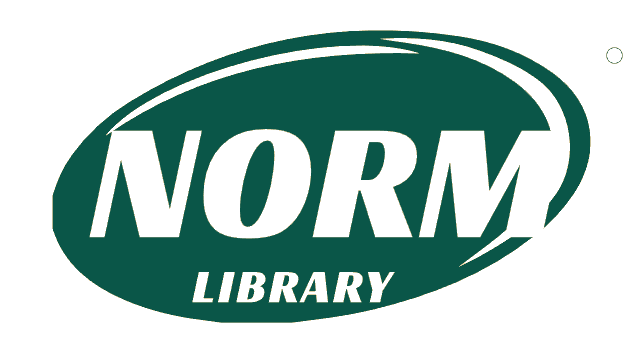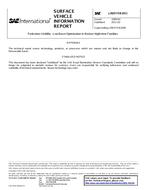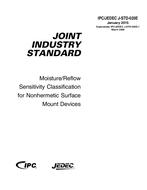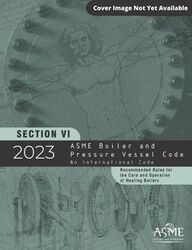SAE J2829_201102
$75.00
Pedestrian Visibility – Low Beam Optimization to Reduce Night-time Fatalities (Stabilized: Feb 2011)
standard by SAE International, 02/01/2011
Description
The primary purpose of vehicle forward lighting is not to see the world but to see the road! In their simplest form, headlights help drivers negotiate a safe path on the road. They do this by lighting the roadway according to (a multitude of) specific standards.
For decades, discussions concerning the niceties of illuminating potential obstacles in the roadway were little more than an academic pursuit as there simply were not sufficient lumens available from filament light sources to achieve all of the desired tasks no matter how worthy they might be. Not unexpectedly, the technology has evolved with the introduction of high output metal-halide sources, multi-task standards combined with multilevel lighting devices and discrete LED sources offering high luminous efficiencies and the means to deliver the light where it can be most useful. The question now becomes one of determining where the available light should be directed.
Every standard advisory group, industry, manufacturer and every driver might have their particular favorite approach to the question of how best to illuminate the road, but few would disagree that a single, vulnerable set of candidates to benefit from improved forward lighting exist. These are pedestrians walking in the roadway and unfortunately, they can exist literally anywhere in the road scene. Some regions of the road are clearly more perilous than others, specifically those located where the light is weaker on the side of the beam directed toward the opposing lane (the left side in the majority of countries).
Work by Sullivan and Flannagan (2001), Kosmatka (2003) and Sullivan (2007) has demonstrated the fatality rate (2300 fatalities) and vulnerability (twice as many left-crossing than right-crossing) of pedestrians in the roadway. This could lead to the conclusion that it is necessary to put more lumens in the opposing lane (left) side of the roadway. However, this is the simple answer; the hard questions are how much light, where on the left and how can this be achieved?
The low beam pattern, by its nature, is a compromise between the need to provide adequate illumination of the road ahead of the vehicle while minimizing the effects of glare to oncoming road users. This means that any study to identify improvements in the low beam to achieve better pedestrian visibility must respect the balance between the needs of the vehicle driver and the other road users.
While various approaches to reduce pedestrian fatalities are being pursued it is clear that the effectiveness of headlighting can play an important role. As noted earlier, the performance of the low beam light distribution has improved with the introduction of new headlamp technologies and more efficient light sources. However, the compromise between providing adequate forward illumination while minimizing the effects of glare to the other road users remains a constraint.
With research findings providing a clearer indication of the nature of the collisions with pedestrians and identifying critical areas in the road scene it is now appropriate to review the requirements of the low beam headlamp system with a focus upon mitigating the pedestrian fatalities.
Product Details
- Published:
- 02/01/2011
- File Size:
- 1 file , 4.6 MB
- Note:
- This product is unavailable in Ukraine, Russia, Belarus





